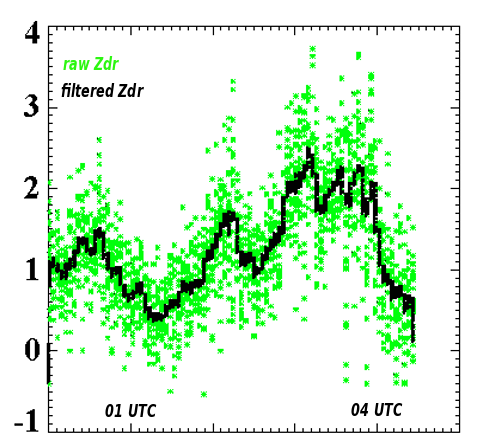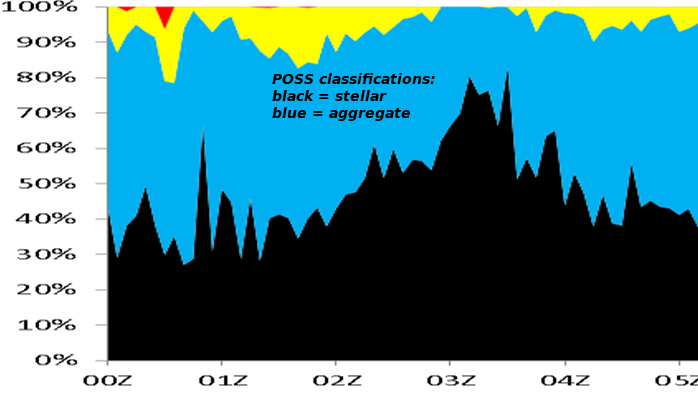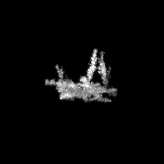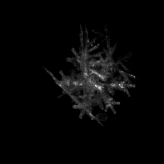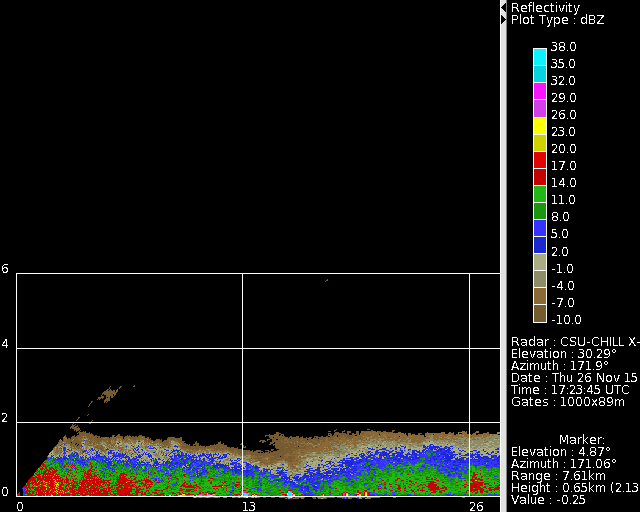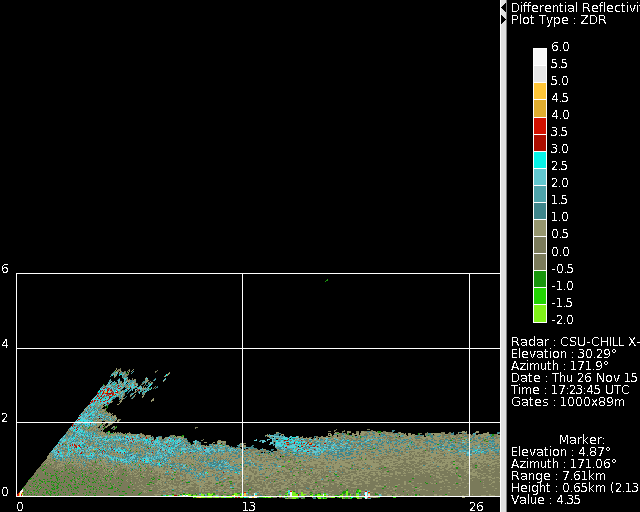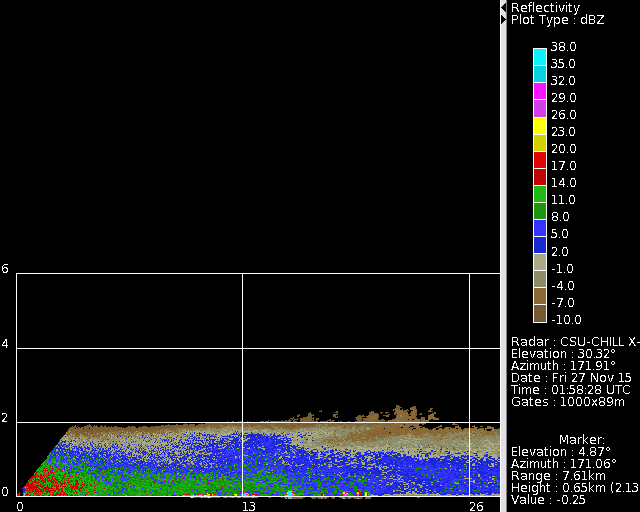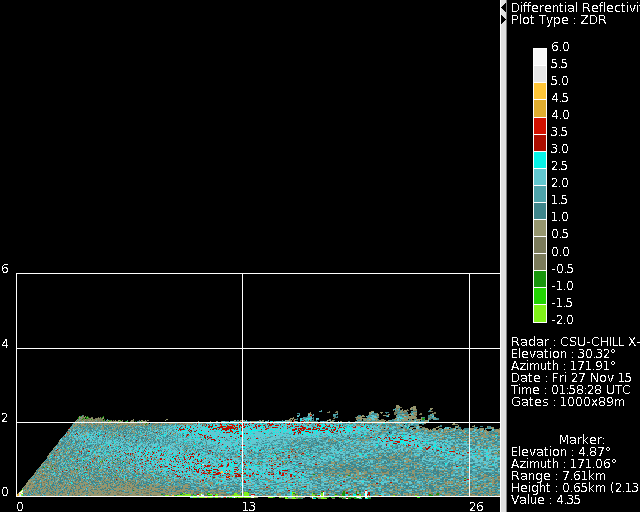DPWX/Variations in snow crystal riming and Zdr: 26 - 27 November 2015
Overview
Data collection for the Multi-Angle Snowflake Camera and Radar project continued for a second cold season during the winter of 2015 - 2016. An overview of the hydrometeor-observing instrumentation installed at the Easton Valley View airport is available here. One significant change made during the current MASCRAD data collection season is the use of the dual frequency (S and X-band) CSU-CHILL radar configuration. The narrow (0.3 degree) X-band beam width allows radar data to be collected at Easton at heights as low as 180 m above ground level without being affected by ground clutter. For the current winter season, a Precipitation Occurrence Sensor System (POSS; Sheppard and Joe, 2008) has been also added to the Easton site. The POSS is a small, vertically pointing X-band bi-static radar system that allows Doppler velocity power spectra to be developed from precipitating hydrometeors. The POSS contributed useful observations during an episode of light snow on 26 - 27 November 2015 during which notable Zdr variations took place.
The following image shows some of the instrumentation that is currently installed at the Easton site. The POSS transmit/receive units have been installed on top of a wooden pole attached to the outer fence of the wind screen.
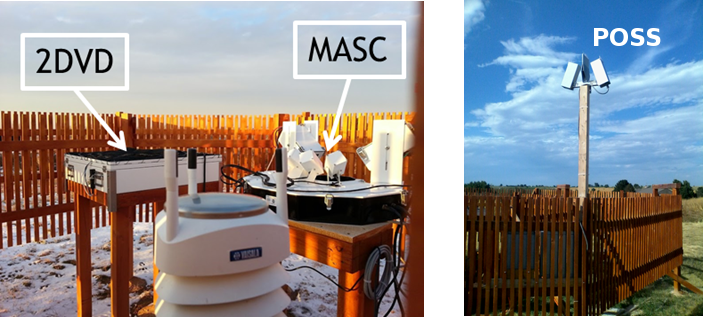
The following plot gives a summary of the time period of interest. The top panel shows the excellent correspondence between the POSS reflectivity values (red trace) and the CSU-CHILL X-band reflectivity values that were extracted from low elevation angle PPI scans over Easton. The middle panel shows the corresponding CSU-CHILL differential reflectivity (Zdr) measurements. The Zdr values were near 0 dB during the early period (~18 - 20 UTC on 26 November). A different regime in which Zdr was consistently near +2 dB took place in the 03 - 04 UTC time interval on 27 November. Examinations of the MASC particle images indicated that riming on the snow particles was more evident during the early, low Zdr period. The two contrasting Zdr episodes of interest have been marked along with the Easton site air temperature traces shown in the bottom figure panel.
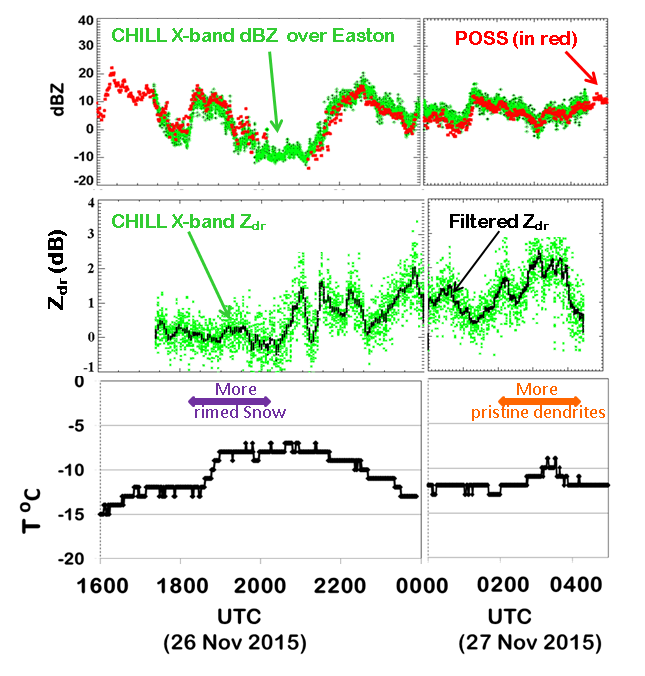
Another view of the two contrasting Zdr periods is shown in the following Zh vs. Zdr scatter plot constructed from the CHILL X-band data. During the early, low Zdr (purple color code) period, Zdr remained near 0 dB despite Zh variations of ~15 dB. In the later, high Zdr (orange color code) period, tended to become more positive as Zh decreased.
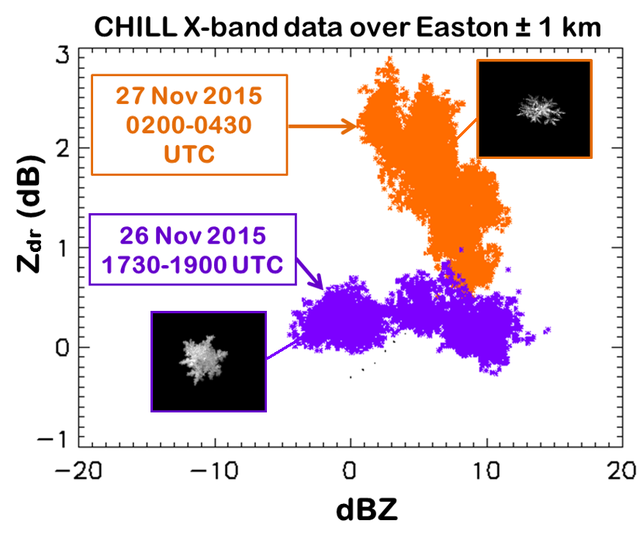
|
|
||
|
27 Nov 2015 0303 to 0313 UTC selected MASC images
A few of the evening period images contain the "edge touching" type of minor aggregation. Perhaps this arrangement magnifies the already very flat axis ratios of the basic crystals?
|
|
||
|
26 Nov 2015 1723 to 2010 UTC X-band Zh (rimed crystals)
Reflectivities reach 14 dBZ (red) at various times, especially near the surface. In general the height gradient of reflectivity is larger than in the evening, pristine crystal period (see next loop series).
|
|
||
|
26 Nov 2015 1723 to 2010 UTC X-band Zdr (rimed crystals)
Note minimal Zdr variations at the surface at Easton during ~ -7 to +15 dBZ Zh variations. This gives the "flat", fairly constant Zdr pattern in the purple (daytime) points of the Zdr vs. Zh scatterplots.
|
|
||
|
27 Nov 2015 0200 to 0408 UTC X-band Zh (pristine crystals)
Compared to the daytime period loop, the echo depth is slightly deeper, but maximum reflectivity levels, and consequently height gradient of reflectivity, are reduced from their daytime period values.
|
|
||
|
27 Nov 2015 0200 to 0408 UTC X-band Zdr (pristine crystals)
Unlike the morning (purple) period, Zdr varies inversely with Zh. This gives the "angled" appearance to the orange points in the scatterplot.
|
|
||
|
26 Nov 2015 1900 to 1909 UTC selected MASC images
Times for MASC image extractions were made when Zh was ~ +5 dBZ in both the low Zdr (daytime / purple) and the high Zdr (evening / orange) episodes. In each case, the first 15 clear images were extracted. Based on this small sample, riming was much more evident in the morning vs. evening time periods. Also, many of the daytime particles were only one or two crystals vs. complex, irregularly-shaped aggregates. Apparently, reduced positive Zdr is due to combination of: (1) Less extreme oblate shape due to rime coating, and (2) Larger standard deviation of canting angles for the rimed vs. the clean crystals.
|
|
||
|
27 Nov 2015 0303 to 0313 UTC selected MASC images
A few of the evening period images contain the "edge touching" type of minor aggregation. Perhaps this arrangement magnifies the already very flat axis ratios of the basic crystals?
|
|
||
|
